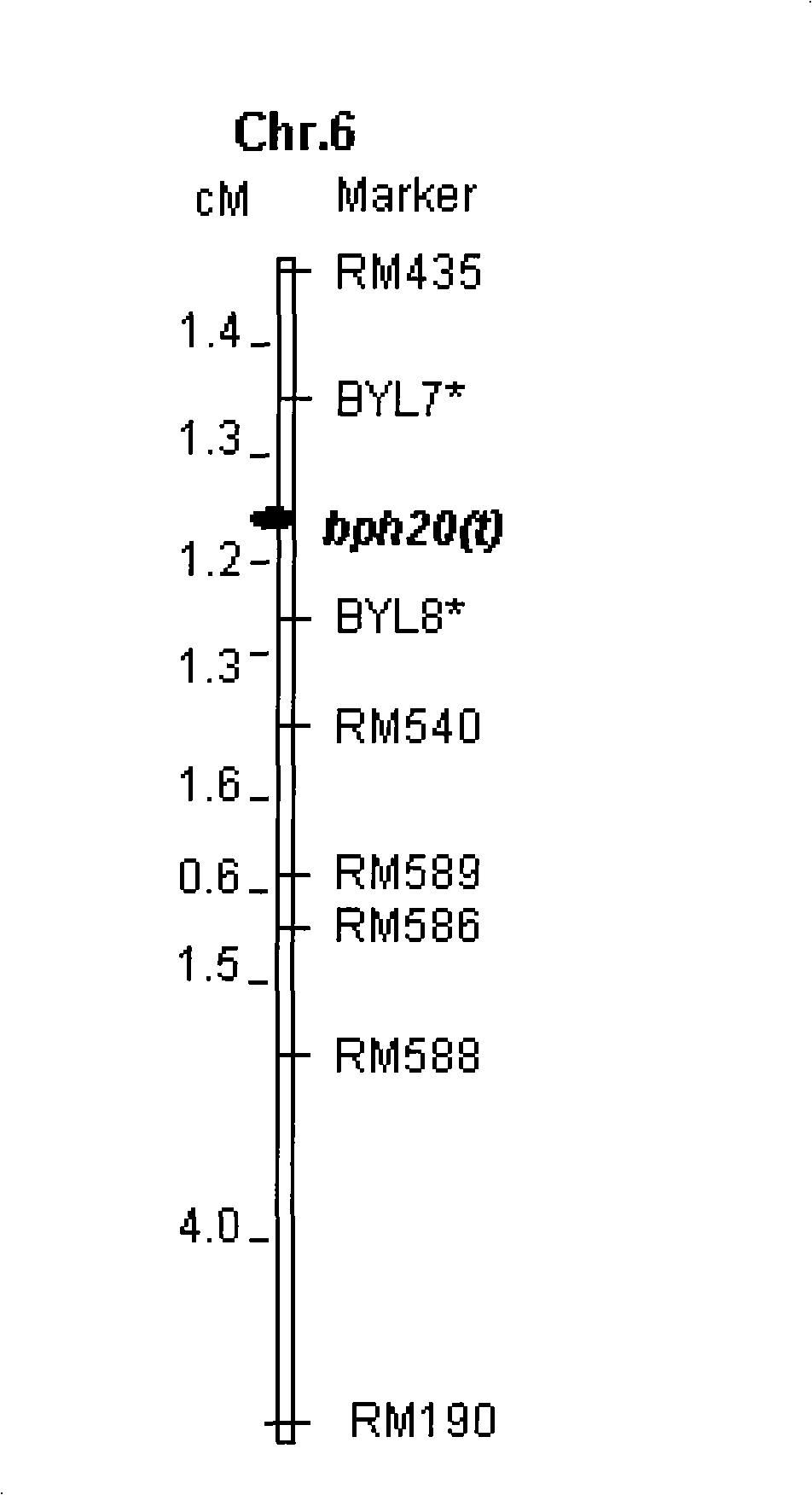Anti-nilaparvata lugens major gene, numerator mark method and uses thereof
A major gene and molecular marker technology, applied in the field of molecular genetics, can solve problems such as changes in resistance stability, and achieve the effect of delaying loss and improving breeding efficiency.
- Summary
- Abstract
- Description
- Claims
- Application Information
AI Technical Summary
Problems solved by technology
Method used
Image
Examples
Embodiment 1
[0040] Materials and Methods
[0041] 1. Material selection
[0042] After the identification of insect resistance, RBPH54 was found to have strong resistance to brown planthopper. Therefore, it was used as a parent and crossed with the susceptible variety TN1. (RBPH54 and TN1 were purchased from Plant Protection Institute of Guangxi Academy of Agricultural Sciences)
[0043] 2. Identification of insect resistance
[0044] The identification method of N. lugens resistance refers to the standard seedling tray screening method SSST (IRRI, 1988) used by the International Rice Research Institute, with certain modifications. The soil used for raising seedlings is taken from the surface soil of paddy fields. After preliminary treatment, soil with uniform muddy quality is used for seedling raising. The rice seeds were soaked in water at 25°C for 24 hours, washed and germinated, and sowed in enamel seedling trays filled with the above soil. Sow 10 varieties per plate, and sow 20-3...
Embodiment 2
[0079] Example 2 Verification of molecular markers
[0080] 1. Materials and methods
[0081] 1.1 Materials
[0082] Negative varieties: no resistance gene varieties, susceptible varieties TN1
[0083] Positive variety:: contains resistance gene, is resistant variety: RBPH54 and ASD7 (purchased from Plant Protection Institute of Guangxi Academy of Agricultural Sciences)
[0084] Molecular marker primers: BYL7 and BYL8 and RM222 and RM244 were synthesized by Shanghai Sangong respectively.
[0085] 1.2 Method
[0086] Genomic DNA of rice sample was extracted by CTAB extraction method (method is the same as in Example 1). Sample DNA was amplified with primers reverse BYL7 and BYL8 and RM222 and RM244, respectively. The reaction system included 0.10 μM primers, 250 μM dNTPs, 1× PCR reaction buffer (50 mM KCl, 10 mM Tris-HCl pH8.3, 1.5 mM MgCl 2 ,), 100ng of DNA template, 1UTaq enzyme. The reaction was carried out in a Tgradient PCR machine. The reaction program was: pre-de...
PUM
 Login to View More
Login to View More Abstract
Description
Claims
Application Information
 Login to View More
Login to View More - R&D
- Intellectual Property
- Life Sciences
- Materials
- Tech Scout
- Unparalleled Data Quality
- Higher Quality Content
- 60% Fewer Hallucinations
Browse by: Latest US Patents, China's latest patents, Technical Efficacy Thesaurus, Application Domain, Technology Topic, Popular Technical Reports.
© 2025 PatSnap. All rights reserved.Legal|Privacy policy|Modern Slavery Act Transparency Statement|Sitemap|About US| Contact US: help@patsnap.com



